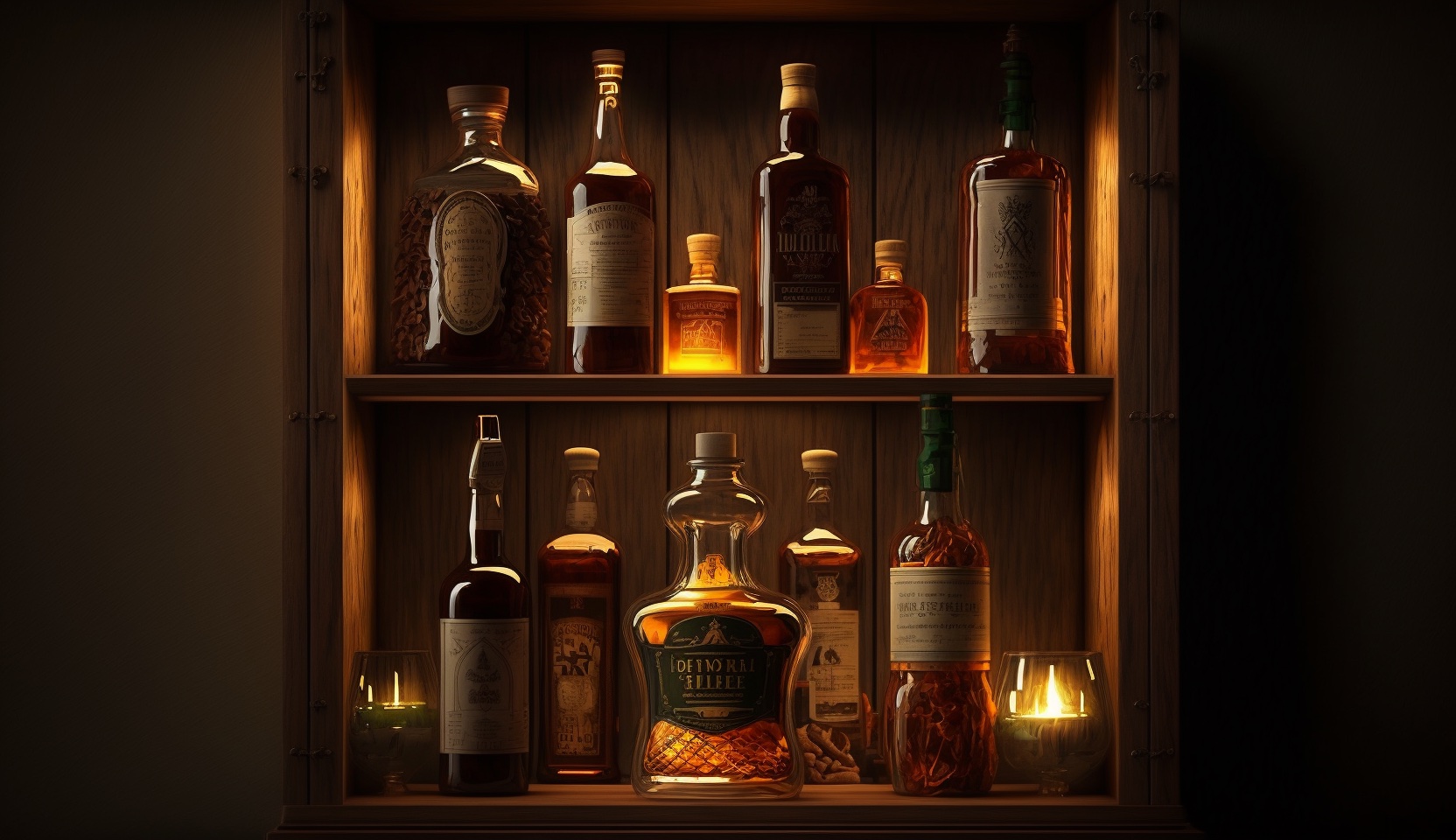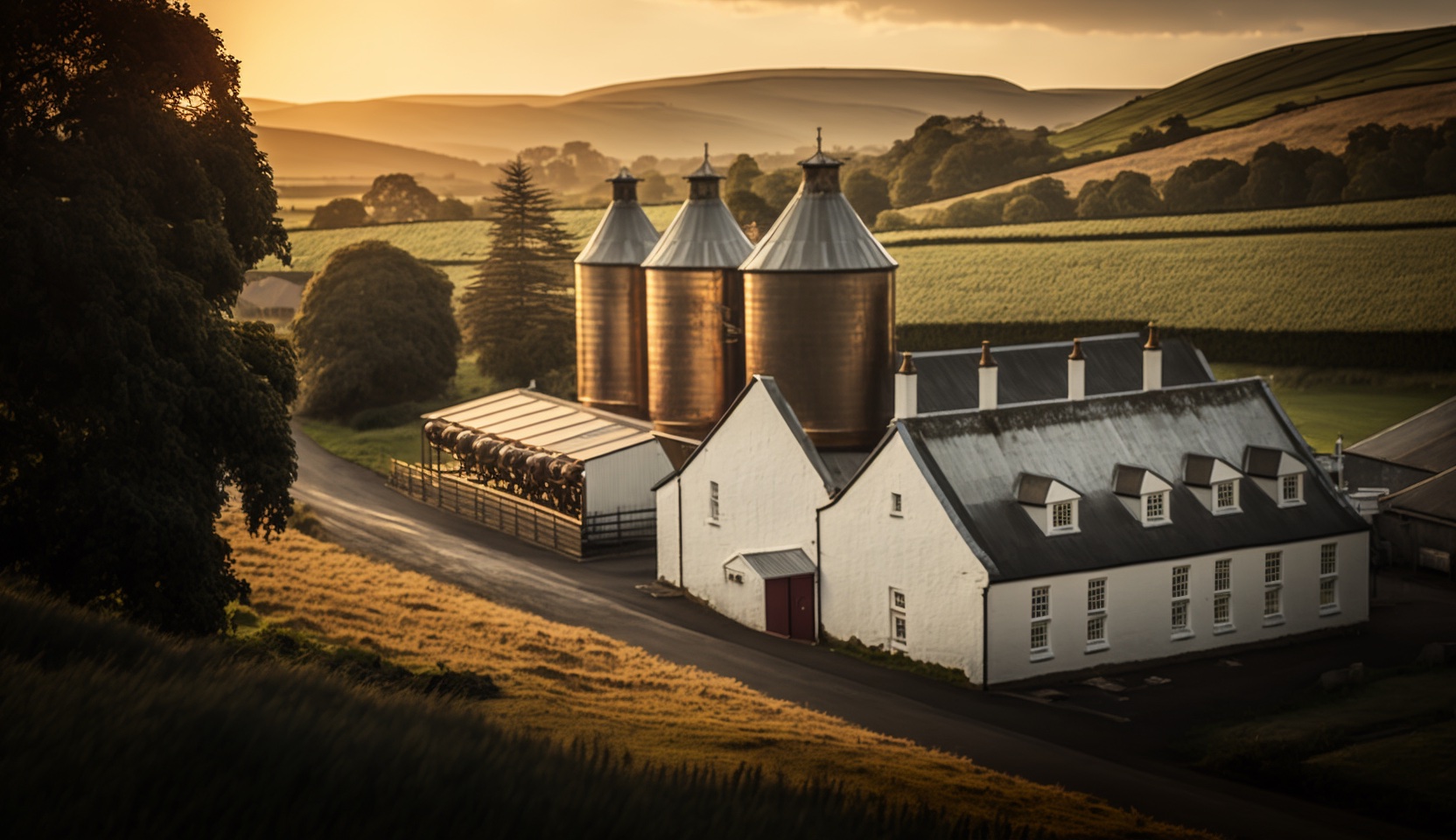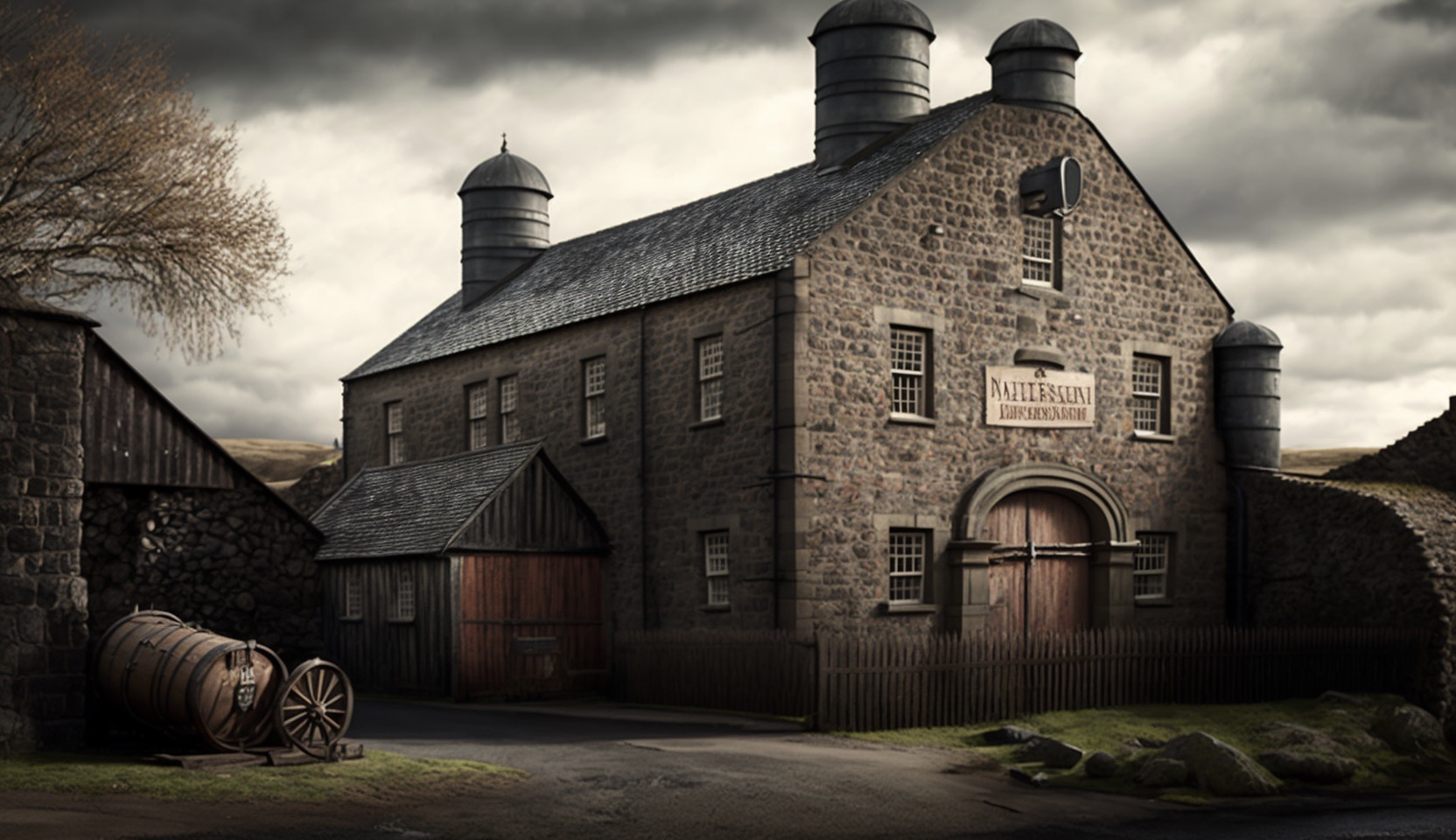Whisky For Beginners
If you’re new to the world of whisky, where do you start? I’m here to help! In this guide, we’ll explore everything beginners need to know about whisky: from its history and production methods, right through to how best to enjoy it.
Once you get your head around the basics, it quickly becomes an enjoyable experience. That’s why this article will provide all the information needed for any beginner looking to find their way into enjoying whisky responsibly with confidence. So let’s dive into our guide for beginners.
Types Of Whisky
If you’re new to the world of whisky, it can be quite intimidating. But don’t worry – there are plenty of varieties and styles out there for beginners to explore!
Scotch Whisky
Scotch whisky is a great place to start. It comes in two main categories: grain whisky and single malt scotch.
Single malt scotch is distilled entirely from malted barley making it slightly sweeter but still full-flavoured.
Grain Whisky
Grain whisky is made from a mixture of barley, wheat, corn, or rye grains. Rye whiskey is typically aged longer than other whiskies and has a strong flavour profile with hints of pepper spice.
There are some excellent grain whiskies out there such as Johnnie Walker Black Label and Canadian Club that are made with ex-bourbon casks.
Blended Scotch Whisky
Blended Malt whiskies combine single malt whiskies from different distilleries into a unique bottle. These whiskies can offer more complex flavours due to the blending process but still maintain some of the characteristics associated with single-malt scotch such as smokiness and peaty notes.
Irish Whiskey
Irish Whiskey is made with malted barley and distilled in Ireland. It can be a blend of different grains or just one type of grain such as oats or wheat. Jameson is perhaps the most famous Irish whiskey, however, whisky lovers are also well aware of single pot still Irish whiskey brands like Redbreast.
Whisky Production Process
The production of scotch whisky starts with malted barley or other grains being milled into a coarse flour called ‘grist’. The grist is then mixed with hot water to create a porridge-like substance known as “mash.”
During this step, enzymes convert starch from the grain into sugar. After that, this sugary liquid called ‘wort’ is cooled down before it’s sent off for fermentation. Here yeast converts sugar into alcohol, producing what is called wash or low wines.
Next up is distillation, where wash (or low wines) gets heated up in copper pot stills until certain compounds evaporate away creating vapours rich in alcohol which are collected through condensers and condensed back into liquid form; now known as spirit.
From here on out these new born malt whiskies will start maturing inside oak barrels usually made from American white oak trees taking anywhere from 10 – 30 years depending on the type of whisky desired at the end result stage!
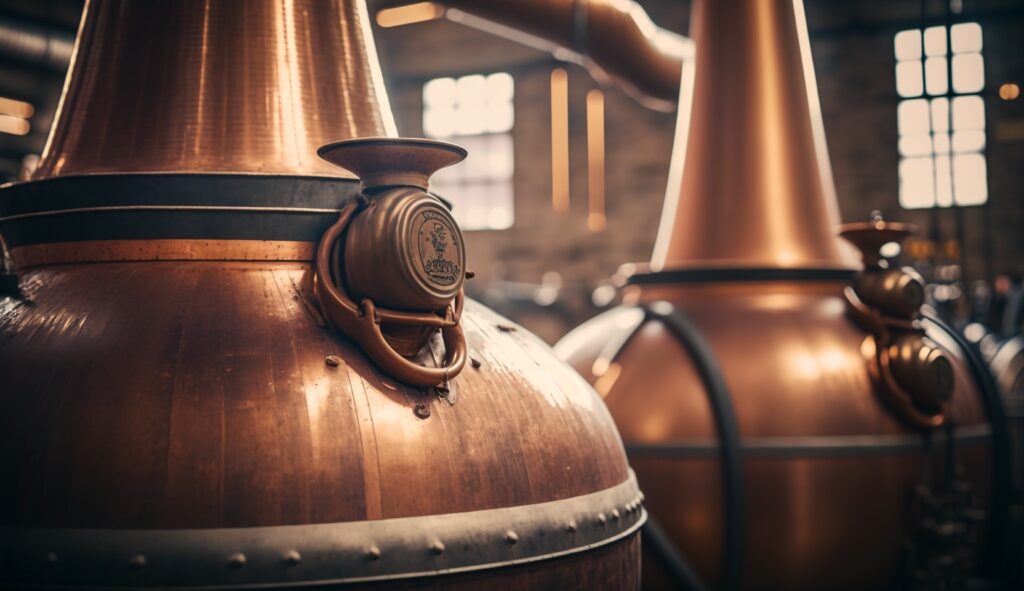
Flavour Profiles
Malt whisky needs time in order to develop its full flavour profile, so producers take great care when selecting how long each batch should mature for – ultimately determining how smooth it tastes once bottled and sold around the globe.
Flavour profile can vary widely, with different single malt whisky having orchard fruits, floral notes, vanilla, toffee, spicy and even exotic fruity flavours like pineapple.
Blended Scotch: What Is It?
Blended Scotch whisky is created when a master blender combines single malts and single grain whiskies from different distilleries. Here’s what you need to know about this popular type of whisky:
– Blended Scotch contains at least one single malt combined with other types of whiskies like grain or wheat whiskies.
– The master blenders carefully select the right combination of ingredients in order to create a consistent flavour profile for their particular blend, this is especially aimed at creating a more drinkable whisky.
– Bar managers rely on the expertise of these master blenders to provide them with consistently high-quality blends that will please their customers.
Why blended scotch whisky?
Blending was traditionally used as a way to make cheaper whisky more palatable to drinkers who found single malt too strong. However, today some very fine blended Scotches are produced which can be enjoyed just as much as any single malt.
In fact, many people believe that blending two or more varieties together creates an entirely new flavour experience. It certainly does open up possibilities for exploring diverse flavours that could never be achieved by drinking only one type of whiskey.
Creating blended Scotch takes skill and knowledge and requires careful consideration in terms of the selection process because each ingredient contributes something unique to the overall flavour profile.
Distilleries and master blenders strive to create balanced combinations that highlight the best attributes of both components so they can produce complex yet harmonious expressions every time.
Distilleries And Master Blenders
Whisky drinkers are no strangers to distilleries and master blenders. These skilled craftsmen have shaped the whisky industry for centuries, creating some of the world’s greatest whiskeys.
Even more recent additions to the world whisky market, like Japanese whisky which has only been around since 1923 is highly regarded by whisky connoisseurs around the globe.
The process of making whisky begins in a distillery, where grains such as barley or wheat are fermented before being distilled into alcohol. This liquid is then aged in oak barrels, including ex-sherry casks, to produce the unique flavours that we know and love from our favourite whiskies. Master blenders take this liquid and carefully blend different types together to create the final product.
This complex procedure requires years of practice and experience to get it just right – so much so that many people don’t realise how much work goes into producing their favourite dram!
With countless varieties out there, every whisky produced comes with its own unique story and flavour profile – something which makes them incredibly special to drinkers all over the world.
Next up, let’s explore how cask selection and maturation processes play a part in crafting extraordinary whiskies.
Casks And Maturation Processes
When it comes to whisky, storage is just as important as what goes into the bottle. Casks and maturation processes are crucial when it comes to how a whisky tastes.
There are many types of casks used in whisky making such as bourbon barrels, sherry butts, port pipes, and rum casks. Each type of cask can give the whisky its own unique flavour profile.
For example, Johnnie Walker Black Label uses a combination of over 40 single malts matured in a variety of different casks which creates its signature taste. On the other hand Highland Park 12 year old has been aged solely in ex-bourbon American oak casks that gives it an unmistakable rich smoky flavour.
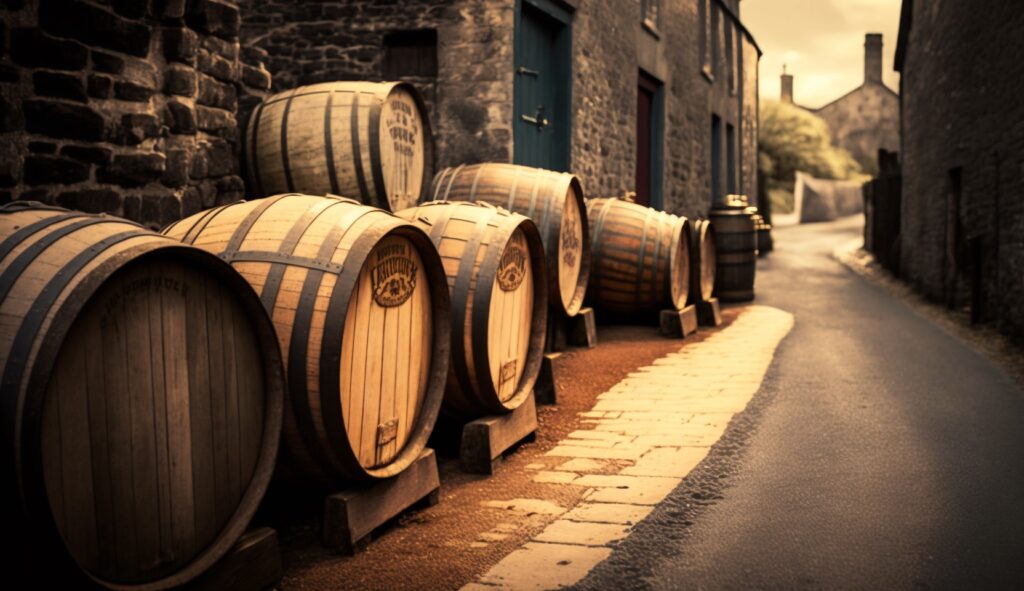
Maturation Process
Whisky maturation requires patience and skill to get right, as well as understanding how each element affects the end product. The length of time spent maturing plays an important role in determining the final flavour of any given whisky – with some whiskies taking up to 30 plus years for full maturation!
In addition to this, temperature changes throughout the seasons bring out new aromas and flavours from within the wood which further adds complexity and depth over time. All these elements are essential components when learning about how whisky is made.
Popular Brands & Bottles For Beginners
Starting out as a whisky enthusiast can be daunting. With so many bottles to choose from, it’s hard to know which ones are the best for beginners. Luckily, there are some popular brands and bottles that all new whisky drinkers should try when they first start exploring this world of flavour. Here’s a quick list:
– Wild Turkey 101 Proof Kentucky Straight Bourbon
Glenfiddich is one of the most well-known single malt whiskies in the world and offers an excellent introduction into the wide variety of flavours available in whisky. Its tasting notes include lightly peated barley combined with sweet hints of brown sugar and dark chocolate making it perfect for those just getting started with whisky.
The Bowmore 15 year old Islay single malt whiskey also has great introductory flavours such as smoky sea salt, sweet honeycomb, citrus fruits, and delicate floral aromas.
For bourbon lovers looking to dip their toes into the pool of whisky appreciation, Wild Turkey 101 proof Kentucky straight bourbon whiskey is a great choice. It’s strong enough to make you take notice but smooth enough for even beginner pilates to enjoy its rich caramel sweetness wrapped around subtle oak tannins.
Best Scotch Whiskies For Beginners
As beginners, it’s always a good idea to start with some of the world’s best whiskies. This gives you an opportunity to explore different flavour profiles and understand how subtle notes can make all the difference. From Christmas cake flavours that are found in American whiskeys, to smokey peaty drams from Scotland – there is something for everyone!
For those who love smoky flavours, Islay malts such as Lagavulin or Laphroaig are great choices. For something less intense yet still complex, try Highland Park which offers subtle sweet notes with hints of heather-honey.
Alternatively, if you’re looking for something more on the sweeter side then bourbons such as Woodford Reserve or Maker’s Mark offer delicious caramelised tones along with rich fruitiness.
Whisky drinkers of any experience level will find something they like in this range of world whiskies.
Whether you prefer light floral scents or heavy oak aromas, there will be a whisky out there suited perfectly to your taste buds – so don’t hesitate to give them all a try!
